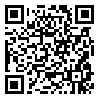Volume 18, Issue 3 (11-2020)
sjsph 2020, 18(3): 289-306 |
Back to browse issues page
Download citation:
BibTeX | RIS | EndNote | Medlars | ProCite | Reference Manager | RefWorks
Send citation to:



BibTeX | RIS | EndNote | Medlars | ProCite | Reference Manager | RefWorks
Send citation to:
Samani M, Golchin A, Alikhani H, Baybordi A. Health risk assessment of Pb in atmospheric dust in Tehran city in different seasons. sjsph 2020; 18 (3) :289-306
URL: http://sjsph.tums.ac.ir/article-1-5928-en.html
URL: http://sjsph.tums.ac.ir/article-1-5928-en.html
1- PhD. Student, Department of Soil Science, Faculty of Agriculture University of Zanjan, Zanjan, Iran , Maryam.samani@znu.ac.ir
2- PhD. Professor, Department of Soil Science, Faculty of Agriculture University of Zanjan, Zanjan, Iran
3- PhD. Professor, Department of Soil Science, Faculty of Agriculture University of Tehran, Tehran, Iran
4- PhD. Assistant Professor, Department of soil and water Research, ¬East Azerbaijan Agriculture and Natural Resources Research and Education Center, AREEO¬, Tabriz, Iran
2- PhD. Professor, Department of Soil Science, Faculty of Agriculture University of Zanjan, Zanjan, Iran
3- PhD. Professor, Department of Soil Science, Faculty of Agriculture University of Tehran, Tehran, Iran
4- PhD. Assistant Professor, Department of soil and water Research, ¬East Azerbaijan Agriculture and Natural Resources Research and Education Center, AREEO¬, Tabriz, Iran
Abstract: (2095 Views)
Background and Aims: Heavy metals in atmospheric dust can enter the human body through ingestion, respiration and skin contact and cause various diseases. The aim of this study was to determine the concentration of lead, a heavy metal, in atmospheric dust and assess its health risk during the period between winter of 1397 and the fall of 1398 in regions 9, 10, 11 and 12 of Tehran Municipality, Tehran, Iran.
Materials and Methods: Atmospheric dusts were collected monthly during one year in the following locations in Tehran: west and east of region 9; east of regions 10, 11 and 12 (the locations in the west of these regions had common borders with the eastern part of the adjacent region). A factorial experiment was performed in a completely randomized design with three replications; the experimental factors included sampling locations and sampling times (seasons). The concentration of lead in the samples was then determined after extraction with hydrochloric acid and concentrated nitric acid (ration 3:1).
Results: The lowest (177.1 mg/kg) and highest (98.476 mg/kg) concentration of lead were found to be in location 9W (Tehransar) in winter and in location 11E (Vahdet-E-eslami Avenue) in autumn, respectively. Further analysis of the data showed that ingestion of the atmospheric dust was the main risk of exposure to lead and that more than 90% of the risk index for non-cancerous diseases caused by lead was related to ingestion hazard quotient (HQ, risk equation).
Conclusion: Based on the findings it can be concluded that in winter the hazard quotient (HQ) and hazard index (HI, non-cancer Risk Index) for lead were lower than the maximum permitted levels for adults and children and, so, did not pose any health risk for these age groups. However, in spring, summer and autumn the risk index for lead was higher than the maximum permitted level for children and, thus, the risk of children developing non-cancerous diseases was high in all the sampling locations.
Materials and Methods: Atmospheric dusts were collected monthly during one year in the following locations in Tehran: west and east of region 9; east of regions 10, 11 and 12 (the locations in the west of these regions had common borders with the eastern part of the adjacent region). A factorial experiment was performed in a completely randomized design with three replications; the experimental factors included sampling locations and sampling times (seasons). The concentration of lead in the samples was then determined after extraction with hydrochloric acid and concentrated nitric acid (ration 3:1).
Results: The lowest (177.1 mg/kg) and highest (98.476 mg/kg) concentration of lead were found to be in location 9W (Tehransar) in winter and in location 11E (Vahdet-E-eslami Avenue) in autumn, respectively. Further analysis of the data showed that ingestion of the atmospheric dust was the main risk of exposure to lead and that more than 90% of the risk index for non-cancerous diseases caused by lead was related to ingestion hazard quotient (HQ, risk equation).
Conclusion: Based on the findings it can be concluded that in winter the hazard quotient (HQ) and hazard index (HI, non-cancer Risk Index) for lead were lower than the maximum permitted levels for adults and children and, so, did not pose any health risk for these age groups. However, in spring, summer and autumn the risk index for lead was higher than the maximum permitted level for children and, thus, the risk of children developing non-cancerous diseases was high in all the sampling locations.
Type of Study: Research |
Subject:
Public Health
Received: 2020/12/20 | Accepted: 2020/11/30 | Published: 2020/11/30
Received: 2020/12/20 | Accepted: 2020/11/30 | Published: 2020/11/30
Send email to the article author
| Rights and permissions | |
 |
This work is licensed under a Creative Commons Attribution-NonCommercial 4.0 International License. |





